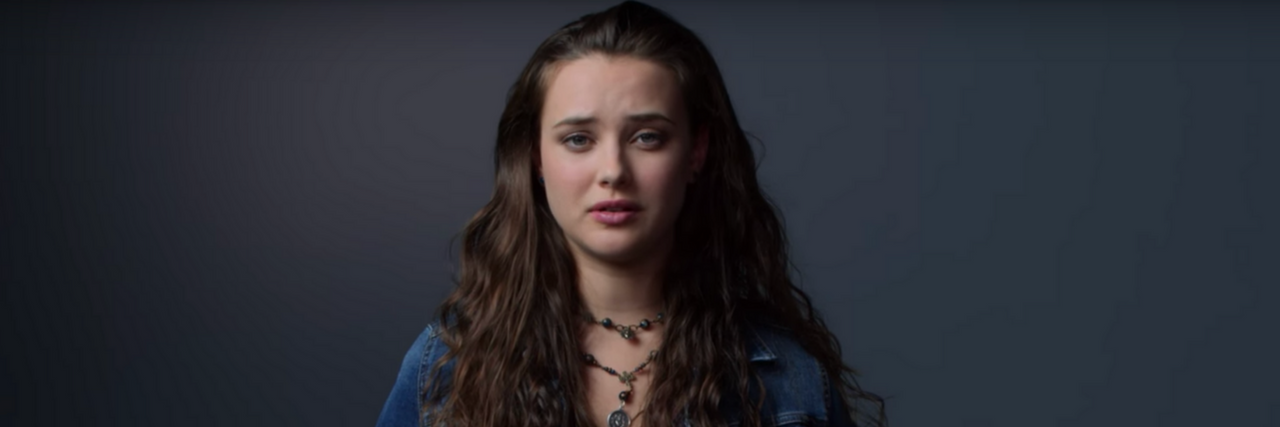Netflix Adds New Content Warning to '13 Reasons Why’ -- It's Just a Year Too Late
Sometimes the news isn’t as straightforward as it’s made to seem. Elizabeth Cassidy, The Mighty’s reporter, explains what to keep in mind if you see this topic or similar stories in your newsfeed. This is The Mighty Takeaway.
The Netflix show “13 Reasons Why” premiered March 31, 2017. On Wednesday, 10 days shy of the first season’s anniversary, Netflix finally decided to add a content warning video to the beginning of the first episode.
The one-minute clip features four of the main characters telling viewers they might not want to watch the show if topics such suicide, sexual assault and substance abuse are hard for them.
Katherine Langford, who plays Hannah Baker, says in the clip that they hope the show sheds light on these issues and starts a conversation. And the show did start conversations. Conversations around how the show did nothing to prepare viewers for what they would see, including a very graphic suicide scene.
This clip seems to be an effort to right Netflix’s wrong of not using content warnings. The problem is it is just a little too late — at least, it certainly is for me.
I am a suicide attempt survivor, but I’m able to talk about suicide and raise awareness about mental health. I choose to be open about it, but nothing could have prepared me for the suicide scene in the show. Had I been aware of the graphic nature of the scene, I would not have watched. I closed my eyes and ears when I realized they were showing the entirety of the suicide. However, this did little to help as I had seen enough and had to deal with the influx of flashbacks and emotions related to my own attempt. Now, whenever suicidal thoughts emerge, the scene from “13 Reasons Why” plays in my head along with the other thoughts.
A content warning is literally that — a warning. Something that comes before another thing, not a year later. By this point, most people who’ve planned to watch the show already have, meaning the damage has already been done.
A couple months after the show aired, Nic Sheff, a writer for the show, defended the use of the graphic suicide scene. Sheff kept himself from attempting suicide by remembering a similar scene, so he thought depicting Baker’s suicide could do the same for others.
It certainly had an effect on viewers; they searched “suicide” on Google. A study published in October looked at internet trends following the show’s premiere for 19 days. The researchers found that terms related to “suicide” increased by 19 percent, equaling between 900,000 and 1.2 million more Google searches than normal. While some of these searches were related to suicide prevention, most searches were about suicide ideation, such as ways to die by suicide.
While we can’t say a content warning when the show premiered would have deterred these searches, it may have prevented those who are particularly vulnerable to suicidal tendencies from watching the show.
After the show aired, two teenaged girls died by suicide. Their families blamed the show and called for an end to the series. Though it’s impossible to know if the show truly had anything to do with their deaths, suicide contagion — an influx of suicides following the media coverage of a suicide — is a problem.
The clip says that people who struggle with these topics might not want to watch, but says nothing about the graphic suicide or sexual assault scenes. Telling an audience the show covers these topics is different than telling an audience that the show will include a graphic suicide scene. That isn’t a spoiler. Everyone knows Hannah is dead from the beginning of the series. Netflix has since included a card at the beginning of these episodes stating its graphic nature, but nothing at the beginning of the entire season until now.
The timing of this new content warning may seem random, but it coincides with a new study, commissioned by Netflix, that was also released on Wednesday. As someone who reads studies on a regular basis, red flags go up when I hear a company, who would benefit from positive results, is paying for a study. Skepticism aside, the study showed that teens find “13 Reasons Why” relatable. In addition to being relatable, researchers at Northwestern University found that 67 percent of teens surveyed said they found the intensity of the show was appropriate.
Though no specific air date has been released, I find it hard to believe Netflix had some sudden epiphany about making its content safer, especially after a study they commissioned found the show was “appropriate” for its targeted audience. To me, it seems like a ploy to drum up attention around the show before the second season premieres.
Even though Netflix left viewers vulnerable during the show’s first season, we can hope the next season will be better informed. Providing content warnings, albeit late, is better than never.
Photo via YouTube

